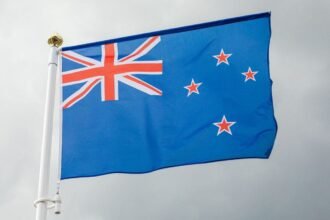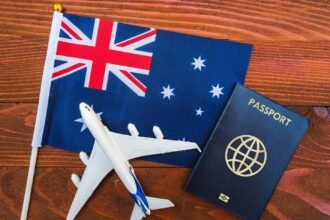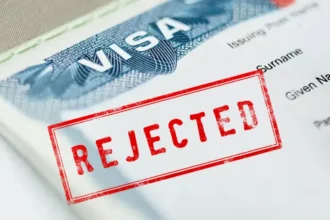Australia, a maritime nation with an expansive coastline and significant offshore oil, gas, and shipping industries, regularly seeks experienced maritime professionals to fill critical skill shortages. For foreign-qualified seafarers, marine engineers, deck officers, and technical offshore workers, entering Australia’s workforce isn’t just about qualifications—it’s about meeting Offshore Technical Compliance (OTC) standards.
Understanding OTC is essential if you are seeking migration under maritime and marine-related occupations. Whether your goal is to obtain a skilled visa, work in offshore energy, or gain recognition of your sea-time experience, the OTC process—administered by the Australian Maritime Safety Authority (AMSA)—is central to ensuring that your foreign credentials align with Australian standards.
🔗 AMSA Seafarer Qualifications and Recognition
What Is Offshore Technical Compliance (OTC)?
Offshore Technical Compliance (OTC) refers to the set of regulations, assessments, and certification standards that determine whether a maritime professional’s foreign qualifications and experience are technically compliant with Australian maritime safety and licensing standards.
This is critical for individuals aiming to:
- Work on vessels in Australian waters
- Operate on offshore rigs and FPSOs (Floating Production Storage and Offloading units)
- Migrate to Australia under Skilled Occupation Lists related to maritime engineering, navigation, or offshore oil and gas operations
It involves an evaluation of:
- Seafarer training (STCW compliance)
- Technical qualifications
- Sea-time records
- Health and safety certifications
- Practical and theoretical knowledge for a specific role
Who Regulates Offshore Technical Compliance in Australia?
The key body responsible for assessing and regulating maritime compliance is the Australian Maritime Safety Authority (AMSA). They handle:
- Recognition of foreign maritime qualifications
- Issuance of Certificates of Recognition (CoR)
- Compliance audits for training institutions and offshore operators
- Medical fitness and sea-service validation
Other entities that may be involved include:
- Australian Skills Assessment authorities (e.g., Vetassess, Trades Recognition Australia) for migration pathways
- Department of Home Affairs for visa assessment
- International Maritime Organization (IMO) guidelines
Key Maritime Occupations Relevant for Australian Visas
Australia lists several maritime and offshore occupations on its Skilled Occupation List (SOL), such as:
- 231211: Master (Ship)
- 231212: Ship’s Engineer
- 231213: Ship’s Officer
- 311415: Hydrographic Surveyor
- 399112: Shipwright
- 399911: Diver
- 312999: Offshore Rig Technician (under miscellaneous engineering technicians)
Each occupation may have unique requirements in terms of seafaring experience, technical training, and safety compliance.
🔗 Australian Skilled Occupation List
Who Needs OTC Compliance?
You must pursue OTC compliance if you are:
- A foreign-qualified deck officer, marine engineer, or electro-technical officer aiming to work in Australian territorial waters
- An offshore oil and gas worker transitioning from the UK, UAE, Philippines, or other seafaring countries
- Applying for a Certificate of Recognition (CoR) with AMSA
- Seeking skills recognition as part of a General Skilled Migration (GSM) visa application
Additionally, employers may require OTC validation before offering sponsorship for Subclass 482 (Temporary Skill Shortage) or 186 (Employer Nomination Scheme) visas.
Understanding the AMSA Recognition Process
1. STCW Convention Compliance
The International Convention on Standards of Training, Certification and Watchkeeping for Seafarers (STCW) is a global framework that Australia adheres to. If your qualifications come from an STCW white-listed country, you may be eligible for recognition.
AMSA maintains a list of countries with bilateral agreements. If your home country is not on the list, your application may be denied or delayed.
2. Certificate of Recognition (CoR)
The CoR allows foreign seafarers to legally work on Australian-flagged vessels. It verifies that your foreign certificate meets the same competency levels required under Australian maritime law.
Eligibility for CoR:
- A valid Certificate of Competency (CoC) from a recognized maritime authority
- English proficiency (generally IELTS 6.0 or equivalent)
- Valid seafarer medical certificate
- Sea-service records
- Security awareness and safety training
🔗 AMSA Certificate of Recognition Guide
Steps to Gain OTC Recognition via AMSA
Step 1: Pre-Application Checklist
Before applying, gather:
- Valid passport
- Seafarer Identification Document (SID)
- CoC issued by your home country
- English language evidence (IELTS/PTE/TOEFL)
- Training and sea-service records
- Medical fitness certificate (STCW A-I/9 compliant)
Step 2: Submit Application for CoR
Use the AMSA Seafarer Certification System (SCS) portal to:
- Create a profile
- Upload required documents
- Pay applicable fees (as of 2024, around AUD $300–$700 depending on the role)
Step 3: Attend Assessment or Oral Exam (If Required)
In some cases, AMSA may require you to sit for an oral examination, particularly if your country has limited alignment with Australian training standards.
Topics may include:
- Vessel safety and operations
- Navigation and bridge control
- MARPOL regulations and environmental awareness
- Emergency procedures
English Language Requirements for Maritime Professionals
Most offshore maritime roles require working-level English for safety and operational efficiency. While AMSA does not always mandate standardized language scores, visa pathways typically do.
For migration purposes, accepted English tests include:
- IELTS Academic or General: Minimum overall score 6.0, no band below 5.0
- PTE Academic: Score of 50 or higher
- TOEFL iBT: Total score 64
English tests are especially critical for General Skilled Migration applicants under subclasses 189, 190, and 491.
How OTC Affects Visa Pathways for Maritime Professionals
To migrate and work in offshore or maritime industries in Australia, compliance with OTC is often a precondition for visa eligibility.
Common Pathways:
- Subclass 482 (TSS): Employer sponsorship may require evidence of OTC.
- Subclass 186 (ENS): Permanent residence through employer nomination.
- Subclass 189/190/491 (GSM): Requires positive skills assessment, OTC, and possibly state nomination.
Some maritime roles may also qualify for regional migration incentives under the DAMAs (Designated Area Migration Agreements).
🔗 Temporary Skill Shortage Visa (Subclass 482)
Skills Assessment and OTC Alignment
To apply for a skilled visa, you must obtain a positive skills assessment. While AMSA doesn’t serve as a migration assessing authority for GSM, your maritime qualifications may be evaluated by:
- Trades Recognition Australia (TRA) – For shipwrights, marine fitters
- VETASSESS – For hydrographic surveyors or engineering technicians
The skills assessment body will review your qualifications in light of Australian standards, where OTC compliance strengthens your case.
Common Challenges with OTC Recognition
1. Non-STCW Country of Origin
If your certificate comes from a country not recognized under AMSA’s STCW equivalence list, you may be ineligible for a CoR. Consider obtaining additional qualifications from a recognized training provider.
2. Incomplete Sea-Time Records
Sea-service must be authenticated and verifiable. Self-attested documents or unverifiable employers often lead to delays.
3. Expired Training Modules
If your safety or MARPOL training certificates are older than 5 years, AMSA may require refresher training.
Bridging the Gap: Offshore Training in Australia
If your qualifications don’t meet OTC or STCW standards, you can pursue additional training in Australia via Registered Training Organisations (RTOs) like:
- TAFE NSW Maritime
- AMC (Australian Maritime College)
- TAFE Queensland – Maritime Operations
Courses include:
- STCW refresher programs
- Certificate III in Maritime Operations
- Marine Engineering bridging modules
- Offshore safety induction and HUET (Helicopter Underwater Escape Training)
Completion of such programs can support both CoR applications and skilled visa assessments.
Medical and Safety Requirements
OTC-compliant professionals must meet medical standards as per STCW A-I/9. These include:
- Physical fitness
- Hearing and vision requirements
- Mental health fitness
Medicals must be completed through AMSA-approved practitioners.
🔗 Seafarer Medicals in Australia
Costs and Timeline for OTC Recognition
| Item | Estimated Cost (AUD) |
|---|---|
| Application Fee (CoR) | $300 – $700 |
| English Test (IELTS/PTE) | $330 – $400 |
| Medical Examination | $200 – $350 |
| Bridging Courses (Optional) | $1,000 – $5,000+ |
| Oral Exam (if required) | Varies |
Processing time: 4–12 weeks, depending on document completeness, oral exam needs, and country of origin.
Conclusion: Is OTC Compliance Worth Pursuing?
For skilled maritime professionals, OTC recognition is absolutely essential when seeking to live and work in Australia. Whether your goal is offshore oil and gas employment, navigating large vessels under an Australian flag, or pursuing permanent migration, the AMSA’s OTC framework is the first checkpoint to cross.
Key Takeaways:
- Start with evaluating your STCW compliance and AMSA recognition status.
- Collect detailed, verifiable documentation.
- Prepare for English testing and possible bridging courses.
- Align your OTC pathway with the correct visa stream (482, 189, 190, or 186).
- Consider engaging with a migration agent or maritime consultant for support.
Useful Links Recap
- 🔗 AMSA Offshore Recognition Overview
- 🔗 Skilled Occupation List
- 🔗 Certificate of Recognition Application Guide
- 🔗 AMSA Approved Medical Practitioners
- 🔗 SkillSelect for GSM Visas
- 🔗 Temporary Skill Shortage Visa – Subclass 482



